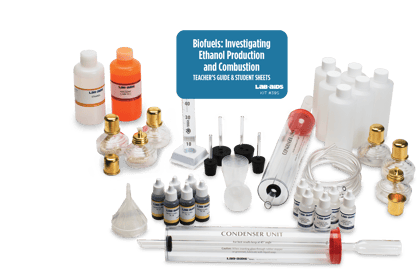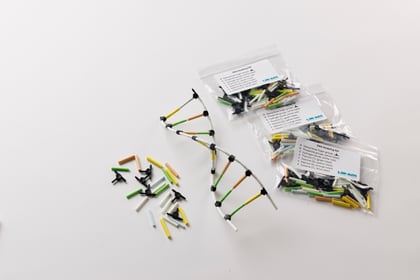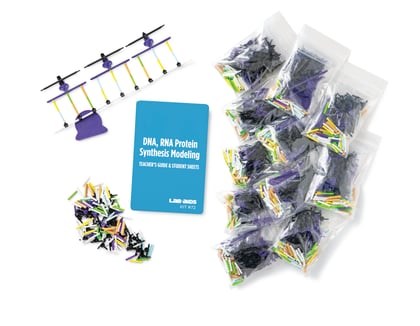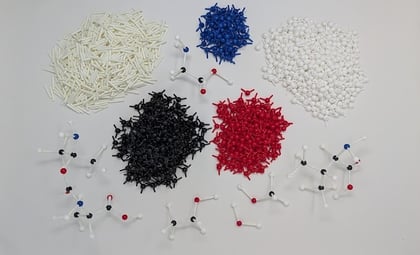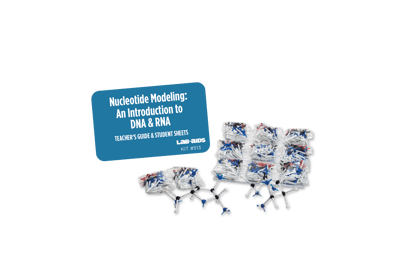Modeling and Comparing Fossil Fuel and Biofuel Combustion
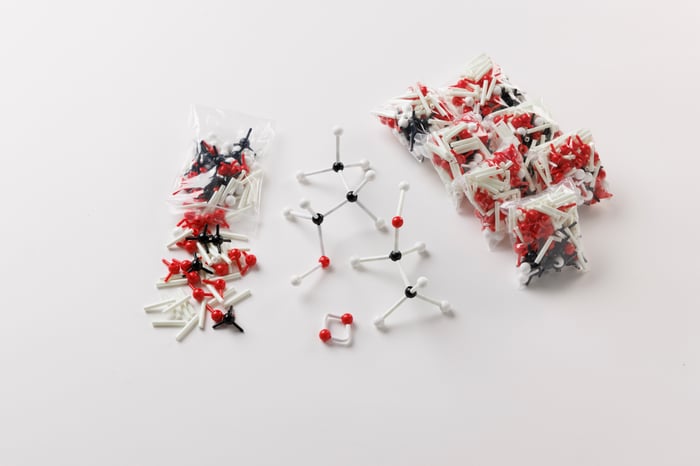
Students should understand the costs and trade-offs of various decisions. In Part A of this activity, students use Lab-Aids® Molecular Models to build methane, ethanol and octane molecules then "combust" them with oxygen molecules. "Combusting" the model molecules helps students determine the balanced chemical equations for the combustion reactions and compare the amount of carbon dioxide released when these three fuels are burned. In Part B students use standard bond energies to calculate and compare the amount of energy released during the combustion reactions they modeled in Part A. They are then asked to use their data about the energy released and the CO2 produced to choose which fuel they think is better.
Details at a Glance
- 1 Day | 1 ~50 minute class period
- 2 Activities
- Accommodates unlimited classes, each with 12 groups of 2 students
- Meets our criteria for supporting literacy
- All materials are non-consumable
- Includes digital resources
Scientific Concepts
• A compound is formed when two or more kinds of atoms bind together chemically.
• The physical properties of compounds reflect the structure of the molecule.
• Carbon atoms can bond to one another in chains, rings, and branching networks.
• Complex chemical reactions occur all around us, for example in processes used to produce energy, such as combustion.
• Chemical reactions may release or consume energy. Some reactions such as the burning of fuels release large amounts of energy by losing heat and by emitting light.
Guides & Student Sheets
Our kits and modules provide you with everything you need so you can open, review, and teach the material confidently the next day.
- Comprehensive Teacher Guide with background information, detailed instruction, example data and answers
- Student Sheets with age appropriate background information, full procedure(s), and analysis items
- Materials necessary for the investigation (beyond common classroom items)
- Safety Data Sheets
Kit Components
- 12 Molecular modeling set: 45 Bonds (white tube) / 26 Oxygen atoms (red with 2 pegs) / 20 Hydrogen atoms (white with 1 peg) / 10 Carbon atoms (black with 4 pegs)
- Downloadable pdfs of student and teacher literature

